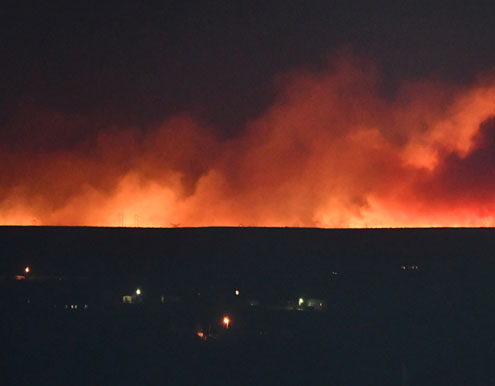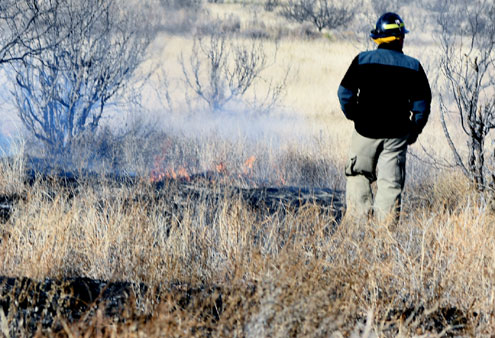AMARILLO – Preparing for wildfire response ahead of time is one of the most important steps a Texas landowner, whether they are major ranching operations or small property owners, can take.
With the wildfire season really heating up, the Texas A&M AgriLife Extension Service is offering several fact sheets to help homeowners prepare for and mitigate wildfire damages.
“We are going to have fire,” said Dr. Tim Steffens, AgriLife Extension range management specialist in Canyon. “But we can better manage fuel loads, the continuity of fuels and defensible space to make fighting the wildfires easier.”
In the past week, Texas A&M Forest Service has responded to more than 25 fires for about 30,000 acres across Texas. The majority of those acres burned were in the High Plains, including fires of 4,480 acres, 2,976 acres and 400 acres in Potter County, 300 acres in Randall County and 15,682 in Oldham, Hartley and Moore counties.
But the fires were not limited to that region, as the dry areas stretch throughout the central and western parts of the state. Other fires included 400 acres inside the city limits of Monahans, 458 acres near Brownwood, 2,500 acres near Levelland and 614 acres near Matador.
Two publications covering wildfire behavior and emergency responses that can help protect property and lives when wildfire occurs were recently released by Steffens; Dr. Morgan Russell, AgriLife Extension range specialist, San Angelo; and Kathryn Radicke, a graduate research assistant at Texas Tech University.
Wildfire Behavior and Emergency Response and Safeguarding Against Wildfire were added to the AgriLife Extension Bookstore, https://www.agrilifebookstore.org, under the search term “wildfire.” Russell also has a Wildfire Ready Checklist fact sheet to help landowners develop a profile specific to their property.

Steffens said last year’s fires might have scared some people away from the idea of conducting prescribed burns on their property, but others have learned they are a tool.
“You can have a say about how big and intense the fire is and where it will be on your property with a prescribed fire,” he said. “The more we have prescribed burning, the better we can manage fuel loads and it will make fighting the wildfires easier.”
“Prescribed burning and grazing are two important processes and tools to manage volatile fuel loads in fire-dominated ecosystems, such as the Panhandle,” Russell said. “The best way to prepare for fire is to incorporate fire into a ranch management plan, like you would drought or a grazing rotation.”
The publications provide information to help landowners increase the fire resistance of buildings, develop defensible spaces, and manage fuel loads and fuel breaks.

When wildfire is a threat, one fact sheet offers these steps:
– Plan ahead to help keep calm, think clearly, and act decisively and correctly in the face of rapidly changing conditions.
– Use news coverage, scanners, telephones and mass alerts to stay informed regarding fire front locations, weather conditions and forecasts, and rate of fire spread to plan well in advance based on current and potential fire behavior.
– Prepare for escape that may be required on short notice.
– Follow instructions of professional fire-fighting personnel quickly and accurately.
– Identify escape routes and safety zones, and make them known to others well before the fire approaches.
– Give clear instructions and ensure they are understood, particularly regarding evacuation procedures, routes and rallying points.
For a complete list of wildfire-related documents concerning preparation, mitigation and recovery, go to: http://texashelp.tamu.edu/004-natural/fires.php